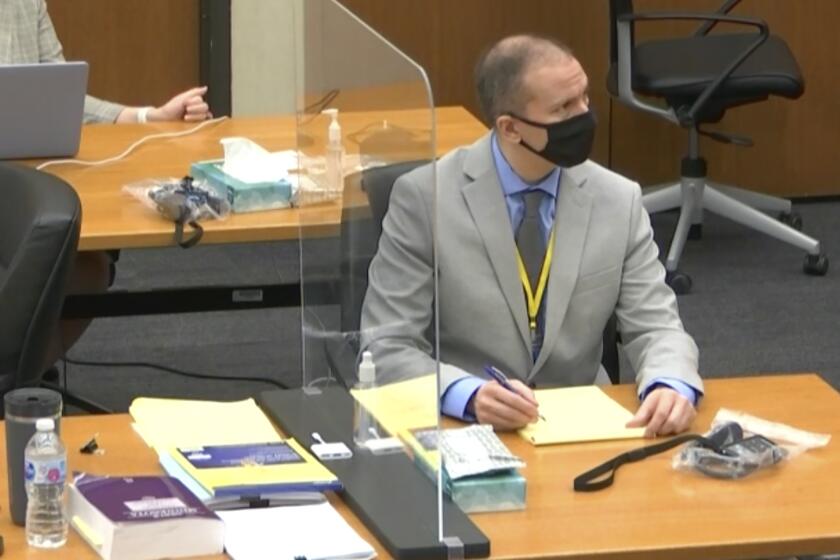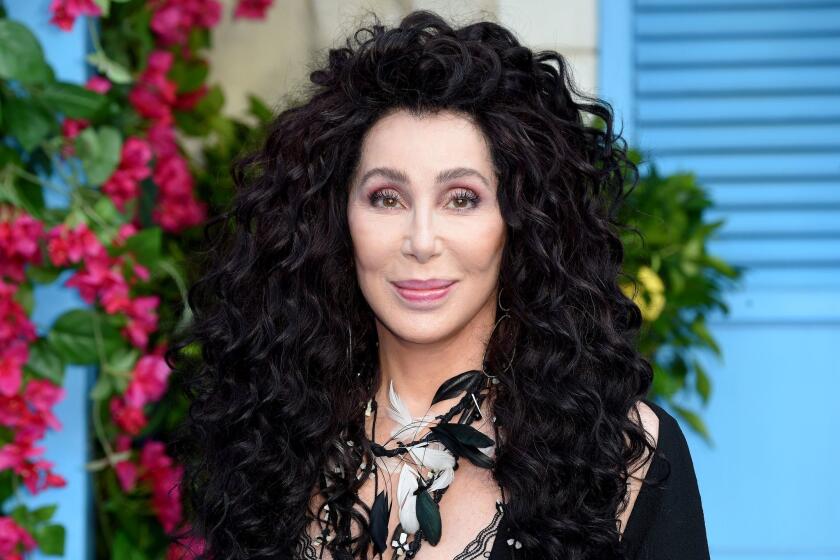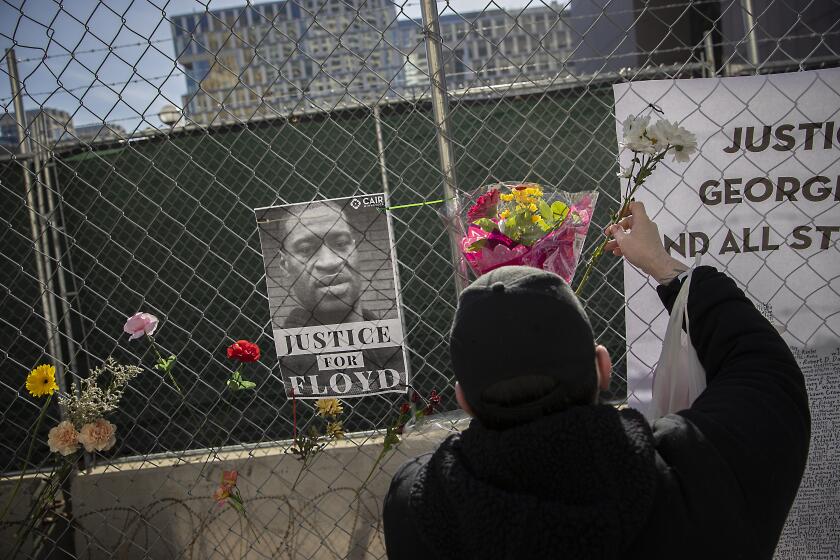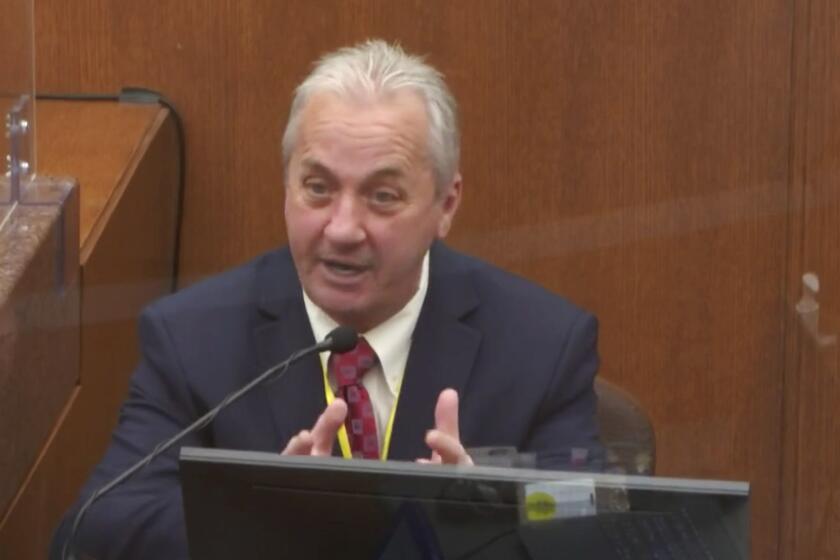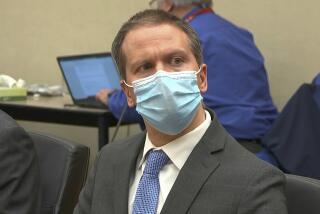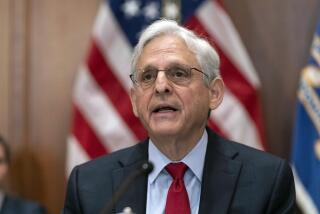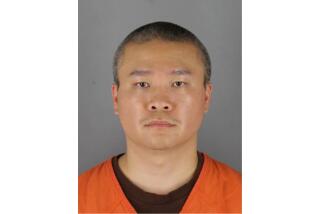Minneapolis police chief testifies against his former officer in the death of George Floyd
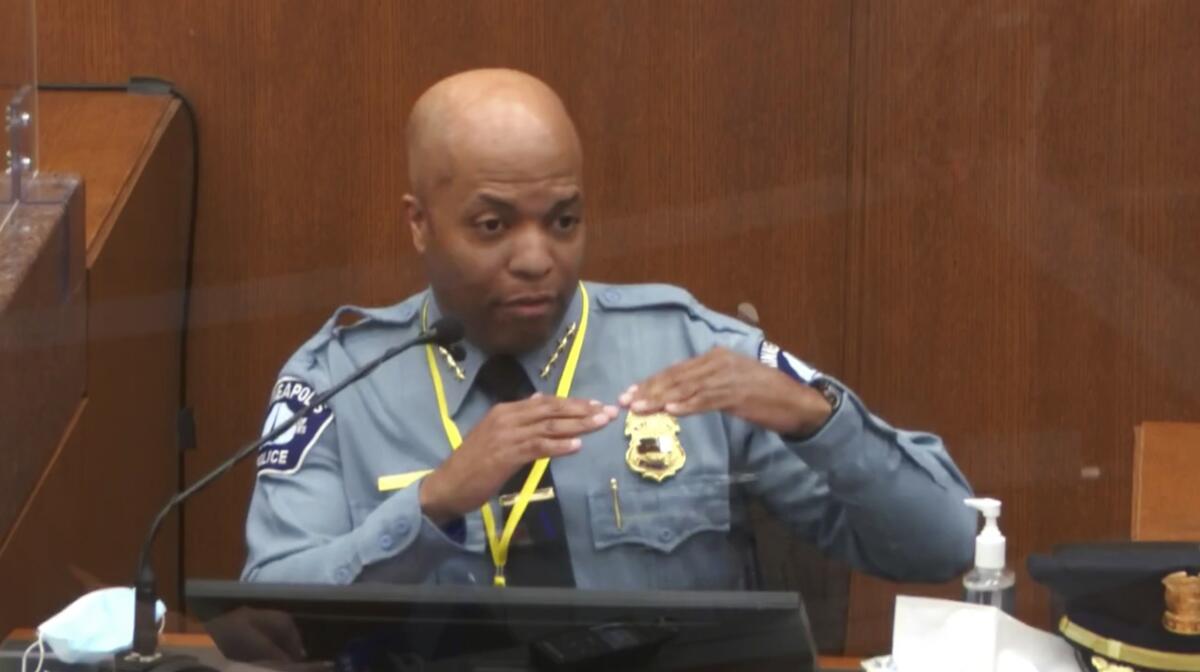
- Share via
MINNEAPOLIS — It was a rare moment: the head of a police department on a witness stand condemning a subordinate.
Testifying Monday in the murder trial of Derek Chauvin, Minneapolis Police Chief Medaria Arradondo said that the officer had used excessive force and broken department policy when he pinned George Floyd under his knee for 9 minutes and 29 seconds.
“Once Mr. Floyd had stopped resisting, and certainly once he was in distress and trying to verbalize that, that should have stopped,” he told jurors.
He testified that continuing to apply pressure to Floyd’s neck even after his body had gone limp — as Chauvin did May 25 before a crowd of onlookers — “in no way shape or form is anything that is by policy part of our training and is certainly not part of our ethics or values.”
The Minneapolis officer defended himself to a bystander by saying George Floyd was “a sizable guy” and “probably on something.”
Arradondo fired Chauvin a day after Floyd’s death, which had been captured on video, setting off a worldwide protest movement against a long history of police brutality targeting Black men.
The measured, clinical tone of the chief stood in contrast to the emotional, sometimes wrenching testimony that prosecutors used in the first week of the trial to establish a connection with jurors and plant the seeds of their case against Chauvin, who is also charged with manslaughter.
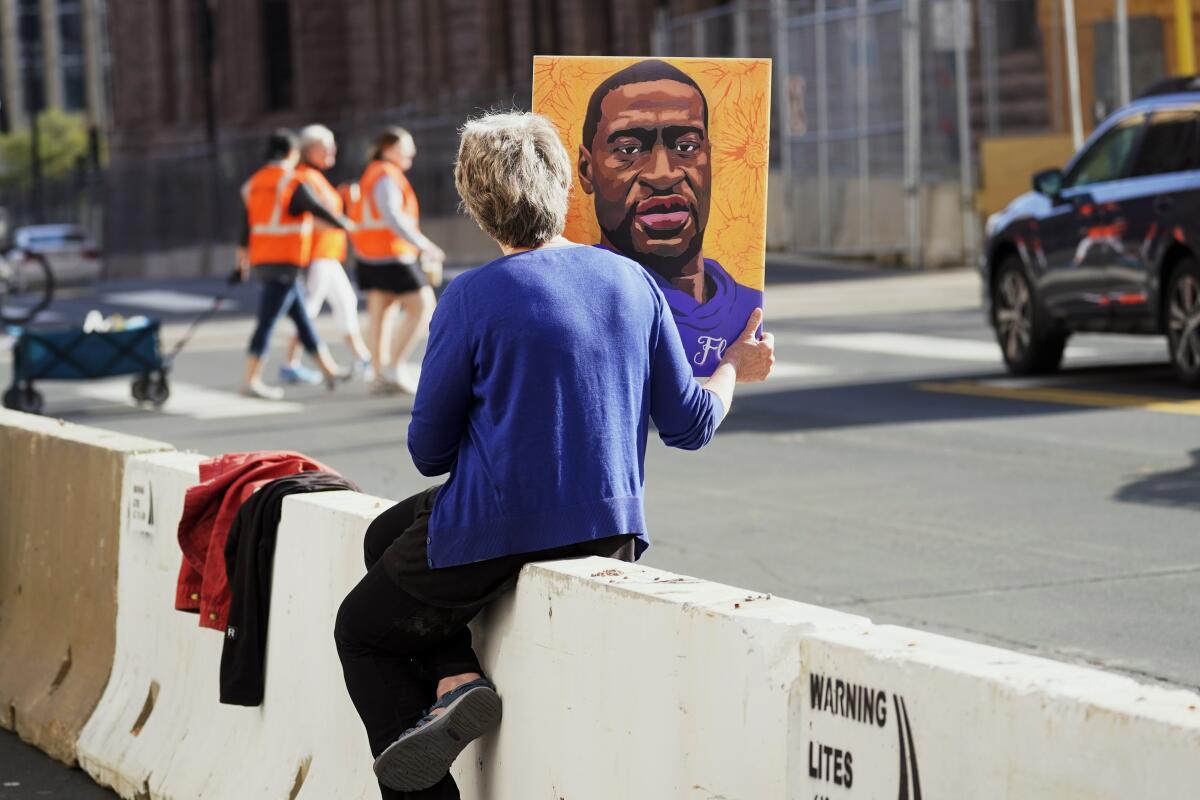
Those witnesses, ordinary citizens who ranged in age from 9 to 61, appeared traumatized by Floyd’s death and described his treatment as obviously wrong.
One was Darnella Frazier, who was 17 when she captured the cellphone video that went viral and drew the world’s attention to the case.
Ten months later on the witness stand, she seemed devastated by what she had witnessed.
She testified that she lies awake at night thinking about that evening — about what she saw and whether she could have done more to intervene.
“I stayed up apologizing and apologized to George Floyd for not doing more,” she said through tears.
But, she said, the blame ultimately rests with Chauvin: “It’s not what I should have done. It’s what he should have done.”
“You Don’t Know What I’ve Done, Who I Am, Or What I Believe,” Cher tweeted before apologizing for a controversial statement she made about George Floyd.
Christopher Martin, the Cup Foods convenience store clerk who thought something was off with the $20 bill Floyd handed him to pay for cigarettes, told jurors he could not escape the feeling that he had set a tragic chain of events in motion.
Another clerk called the police, and soon Martin was looking on in “disbelief and guilt” as Floyd lay handcuffed on the pavement outside the store with Chauvin’s knee on his neck.
“If I would have just not taken the bill, this could have been avoided,” Martin testified.
He stopped working at the store and said he avoids the area.
Another witness, Charles McMillian, was driving near the intersection and saw police confronting Floyd. He testified that he pulled his van to the side of the road and got out to get a closer look at the situation.
Video captured McMillian urging Floyd to get into the police car.
“I can’t move,” Floyd said. Moments later, he cried out, “Momma! Momma.”
On the witness stand, McMillian shook his head, sobbed and exclaimed, “Oh, my God.”
“I feel helpless,” he said. “I don’t have a mama either. I understand him.”
Demonizing the victim, as Chauvin’s lawyers have done, works particularly well when the victim is Black, because it activates unconscious racial biases.
Genevieve Hansen, an off-duty firefighter who was out for a walk in the area that evening, testified that for months she has been haunted by feelings that she had waited too long to call 911 and not pressed harder to help Floyd herself.
“I should have called 911 immediately but I didn’t,” she told jurors.
Chauvin appeared “very comfortable with the majority of his weight balanced on top of Mr. Floyd,” she said.
“I identified myself right away because I noticed that he needed medical attention,” she said. “It didn’t take long to notice that he had an altered level of consciousness.”
But she never had the chance to provide aid.
“There is a man being killed, and I would have been able to provide medical attention to the best of my abilities, and this human was not provided that right,” she said.
The testimony from the bystanders laid the groundwork for police officers to take the stand — defying the long tradition of the so-called blue wall of silence.
In addition to Arradondo, the city’s first Black chief, jurors heard Friday from several Minneapolis police officers who criticized Chauvin’s tactics as reckless and excessive.
Lt. Richard Zimmerman, a veteran homicide detective, described Chauvin’s use of force as “totally unnecessary.”
“First of all, pulling him down to the ground facedown and putting your knee on the neck for that amount of time is just uncalled for,” he said. “I saw no reason why the officers felt they were in danger, if that’s what they felt. And that’s what they would have to feel to use that type of force.”
The head of the Minneapolis Police Department’s homicide division testifies the tactics used to subdue George Floyd were ‘totally unnecessary.’
On Monday, jurors also heard from an emergency room doctor who declared Floyd dead.
Dr. Bradford Wankhede Langenfeld testified that Floyd arrived without a heartbeat “sufficient to sustain life” and that he spent 30 minutes trying to save him.
He said he believed Floyd died from lack of oxygen — consistent with the prosecution argument that Chauvin had asphyxiated him. But under questioning by defense attorney Eric Nelson, the doctor acknowledged that there were numerous possible causes for asphyxia, including drug use.
Chauvin’s defense, which will present its case after the prosecution rests, is expected to argue that Floyd died of a drug overdose. Toxicology testing found fentanyl and methamphetamine in his body.
The trial is expected to last a month.
More to Read
Sign up for Essential California
The most important California stories and recommendations in your inbox every morning.
You may occasionally receive promotional content from the Los Angeles Times.
